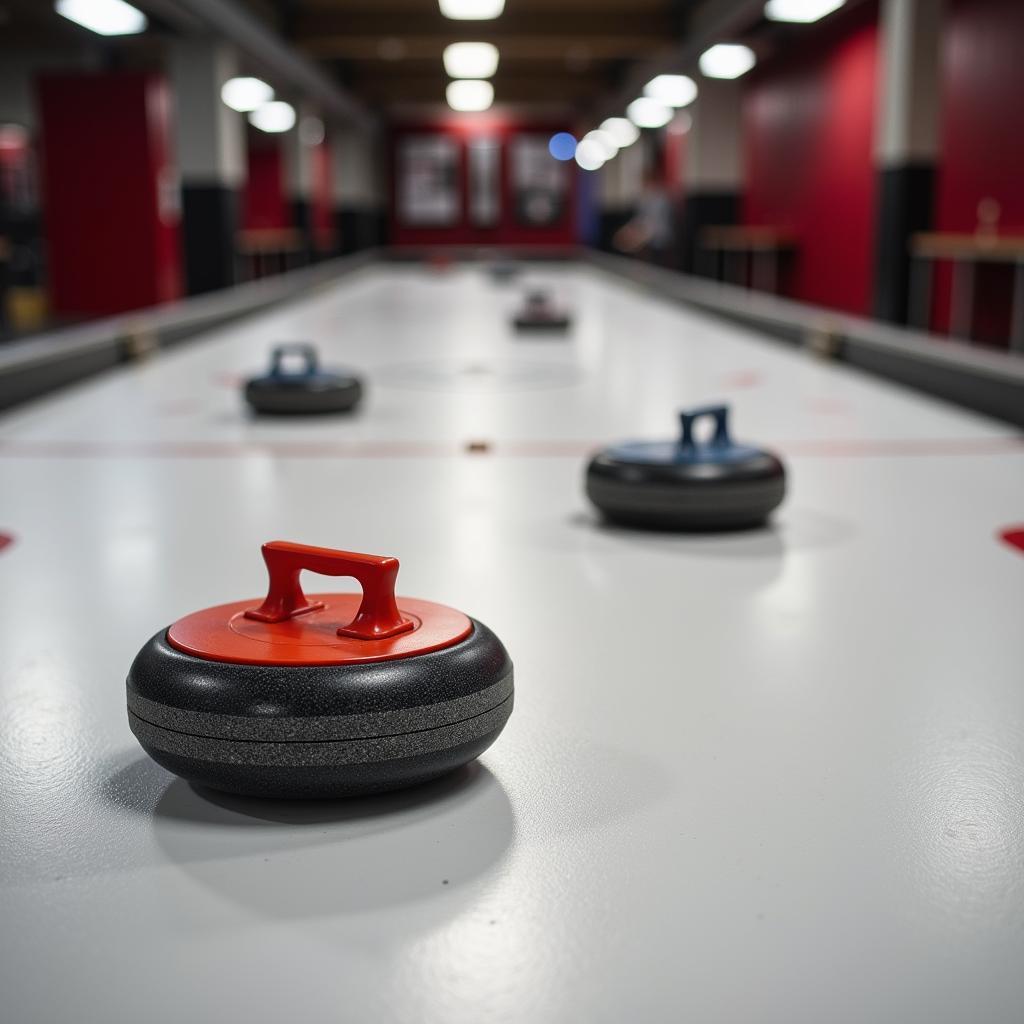The Sliding Puck Game, also known as shuffleboard, is a classic game of skill and strategy that has entertained people of all ages for generations. Whether you’re a seasoned pro or a complete beginner, this comprehensive guide will provide you with everything you need to know to master the game and impress your friends.
 Sliding puck game setup
Sliding puck game setup
Understanding the Basics
The objective of the sliding puck game is simple: slide your pucks down the board and into the highest-scoring areas while preventing your opponent from doing the same. The game can be played one-on-one or in teams, making it a fantastic choice for social gatherings, family game nights, or even competitive tournaments.
Equipment You’ll Need
Before you can start playing, you’ll need a few essential pieces of equipment:
- Shuffleboard Table: The heart of the game, the table provides a smooth, polished surface for the pucks to glide across.
- Pucks: These are the round, weighted discs that you’ll be sliding down the board. They typically come in two different colors to distinguish between players or teams.
- Scoreboard: While not strictly necessary, a scoreboard can help keep track of the action, especially during close matches.
 Close up of sliding puck game pucks on table
Close up of sliding puck game pucks on table
How to Play Sliding Puck Game
Now that you have your equipment ready, let’s dive into the rules of the game:
- Determine First Player: Typically, a coin toss or a similar method is used to decide who goes first.
- Take Turns Sliding Pucks: Players take turns sliding their pucks from the designated starting area at the end of the table. The goal is to land your pucks in the highest-scoring zones without falling off the board’s edges.
- Scoring: Once all pucks have been played, points are awarded based on their final positions within the scoring zones. The scoring system may vary depending on the specific rules you’re following.
- Game End: The game continues until a predetermined number of rounds or a specific score is reached.
Mastering the Art of Sliding
While the rules may seem straightforward, mastering the art of sliding a puck accurately takes practice and finesse. Here are some tips to improve your technique:
- Grip and Stance: Hold the puck with a relaxed grip, using your index finger and thumb to guide its direction. Maintain a stable stance with your feet shoulder-width apart.
- Smooth Release: Use a smooth and controlled motion to release the puck, avoiding any jerky movements that could throw off its trajectory.
- Applying Spin: Experiment with applying a slight spin to the puck to influence its movement and increase your chances of landing in those high-scoring zones.
 Players strategizing during a sliding puck game
Players strategizing during a sliding puck game
Strategies for Success
To gain a competitive edge, consider these strategic tips:
- Offensive Play: Aim for the highest-scoring areas, but be mindful of your opponent’s pucks. Knocking their pucks out of scoring positions can be just as effective as scoring yourself.
- Defensive Play: Protect your pucks by strategically blocking potential scoring areas for your opponent. This can involve placing your pucks in defensive positions or using them to guard those high-value zones.
- Risk vs. Reward: Weigh your options carefully. Sometimes, a risky shot with a high potential payoff might be worth taking, while other times, a more conservative approach is wiser.
Conclusion
The sliding puck game is a timeless pastime that combines skill, strategy, and a healthy dose of competition. Whether you’re a casual player or a seasoned competitor, the simple joy of sliding pucks and aiming for victory is an experience that transcends generations. So, gather your friends and family, grab a set of pucks, and let the games begin!





